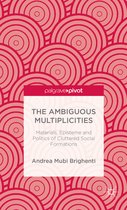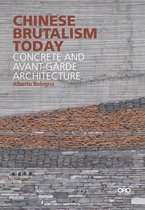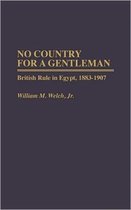Diversity in the Great Unity Regional Yuan Architecture
Afbeeldingen
Sla de afbeeldingen over
Artikel vergelijken
Auteur:
Lala Zuo
- Engels
- Hardcover
- 9780824877316
- 30 oktober 2019
- 248 pagina's
Samenvatting
The first in-depth English-language work to present regional traditions of Chinese architecture based on a detailed study of the timber construction system. Lala Zuo presents case studies of twenty buildings along the Yangtze River built during the Yuan, often considered a transitional phase in Chinese architectural history.
Timber-framed architecture has long been viewed as an embodiment of Chinese civilization, a hierarchic society ruled by Confucian orthodoxy. Throughout its history, Chinese architectural design was closely regulated by court-enforced building codes, which created a highly standardized and modularized system. In Diversity in the Great Unity - the first in-depth English-language work to present regional traditions of Chinese architecture based on a detailed study of the timber construction system - Lala Zuo maintains that during the nearly century-long Yuan dynasty (1271–1368), the tradition of “Han-Chinese” architecture as coded, uniform, and controlled by the central government did not take hold. She presents case studies of twenty buildings along the Yangtze River built during the Yuan, often considered a transitional phase in Chinese architectural history.
Most of the structures have firm dates, and all are analyzed according to patronage, chronology, and function. Their representativeness is determined by their broad geographic distribution as well as by their scarcity. Numerous photographs and line-drawings accompany the analyses. Referencing Yuan architecture in north China along the Yellow River, Zuo outlines its characteristics in three regions and connects the regional traditions to periods before and after the Yuan, allowing her to contextualize architecture in Yuan social and political history. She explains how the division of regional traditions, especially those in the south, contributed to the transformation of dynastic styles from the Song (960–1279) to the Ming (1368–1644) and how the Song-Yuan migration may have affected architectural design.
An appendix presents an extensive glossary of Chinese architectural terms in Song terminology to enable a better understanding of the subject. Although the primary focus of this book is the technical evolution of surviving Yuan architecture, its interdisciplinary approach goes beyond architecture by offering a re-evaluation of Chinese society in light of cultural and religious diversity under Mongol rule.
Timber-framed architecture has long been viewed as an embodiment of Chinese civilization, a hierarchic society ruled by Confucian orthodoxy. Throughout its history, Chinese architectural design was closely regulated by court-enforced building codes, which created a highly standardized and modularized system. In Diversity in the Great Unity - the first in-depth English-language work to present regional traditions of Chinese architecture based on a detailed study of the timber construction system - Lala Zuo maintains that during the nearly century-long Yuan dynasty (1271–1368), the tradition of “Han-Chinese” architecture as coded, uniform, and controlled by the central government did not take hold. She presents case studies of twenty buildings along the Yangtze River built during the Yuan, often considered a transitional phase in Chinese architectural history.
Most of the structures have firm dates, and all are analyzed according to patronage, chronology, and function. Their representativeness is determined by their broad geographic distribution as well as by their scarcity. Numerous photographs and line-drawings accompany the analyses. Referencing Yuan architecture in north China along the Yellow River, Zuo outlines its characteristics in three regions and connects the regional traditions to periods before and after the Yuan, allowing her to contextualize architecture in Yuan social and political history. She explains how the division of regional traditions, especially those in the south, contributed to the transformation of dynastic styles from the Song (960–1279) to the Ming (1368–1644) and how the Song-Yuan migration may have affected architectural design.
An appendix presents an extensive glossary of Chinese architectural terms in Song terminology to enable a better understanding of the subject. Although the primary focus of this book is the technical evolution of surviving Yuan architecture, its interdisciplinary approach goes beyond architecture by offering a re-evaluation of Chinese society in light of cultural and religious diversity under Mongol rule.
Productspecificaties
Wij vonden geen specificaties voor jouw zoekopdracht '{SEARCH}'.
Inhoud
- Taal
- en
- Bindwijze
- Hardcover
- Oorspronkelijke releasedatum
- 30 oktober 2019
- Aantal pagina's
- 248
- Illustraties
- Nee
Betrokkenen
- Hoofdauteur
- Lala Zuo
- Hoofdredacteur
- Ronald G. Knapp
- Hoofduitgeverij
- University Of Hawai'I Press
Overige kenmerken
- Extra groot lettertype
- Nee
- Product breedte
- 178 mm
- Product lengte
- 254 mm
- Studieboek
- Nee
- Verpakking breedte
- 178 mm
- Verpakking hoogte
- 254 mm
- Verpakking lengte
- 254 mm
- Verpakkingsgewicht
- 736 g
EAN
- EAN
- 9780824877316
Je vindt dit artikel in
- Categorieën
- Studieboek of algemeen
- Algemene boeken
- Taal
- Engels
- Boek, ebook of luisterboek?
- Boek
- Beschikbaarheid
- Leverbaar
Kies gewenste uitvoering
Bindwijze
: Hardcover
Prijsinformatie en bestellen
De prijs van dit product is 97 euro en 99 cent.
1 - 2 weken
Verkoop door bol
- Prijs inclusief verzendkosten, verstuurd door bol
- Ophalen bij een bol afhaalpunt mogelijk
- 30 dagen bedenktijd en gratis retourneren
- Dag en nacht klantenservice
Rapporteer dit artikel
Je wilt melding doen van illegale inhoud over dit artikel:
- Ik wil melding doen als klant
- Ik wil melding doen als autoriteit of trusted flagger
- Ik wil melding doen als partner
- Ik wil melding doen als merkhouder
Geen klant, autoriteit, trusted flagger, merkhouder of partner? Gebruik dan onderstaande link om melding te doen.








